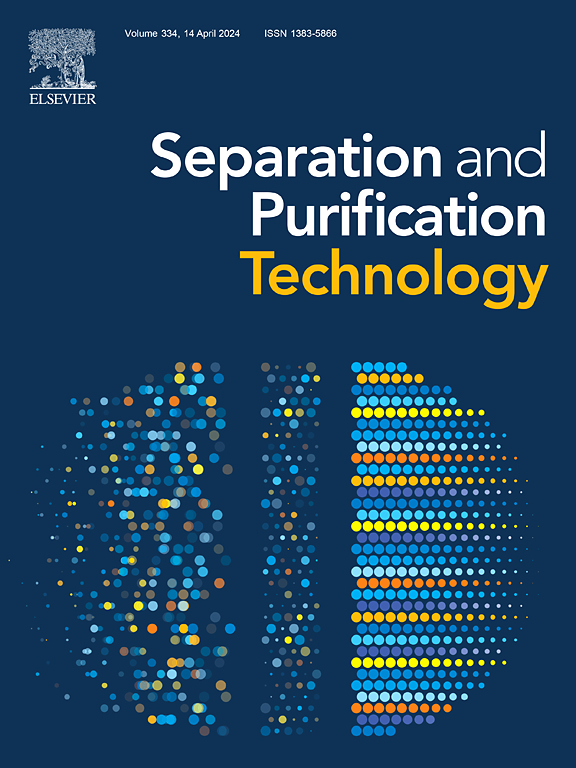The evolution of Ge occurrence state and Si-Ge relationship during precipitation-dissolution enrichment to recover scattering metals from Zn concentrate leaching solution
IF 8.1
1区 工程技术
Q1 ENGINEERING, CHEMICAL
引用次数: 0
Abstract
Germanium is one of the strategic scattering metals, and recovering a minor concentration of scattering metals from zinc concentrate’s leaching solution is an essential resource worldwide. Practically, neutralizing precipitation and the subsequent dissolution are implemented to enrich scattering metals from zinc leaching solution, facilitating further extraction of Ge and others. Silicon poses significant challenges to the efficient extraction of Ge due to their similar chemical property and the inert nature of silica. However, the evolution of the Ge occurrence state, especially its relationship with Si, during the precipitation and dissolution process in zinc hydrometallurgy is unclear, and there is a lack of an effective method to separate Si/Ge. This paper started with a detailed characterization and leaching behavior of Ge-enriched residue obtained from the plant, followed by a systematic investigation of Ge behavior in synthetic Si/Ge binary and Fe/Si/Ge ternary systems. Eventually, options for Ge enrichment from zinc leaching solution and Si/Ge separation are recommended, providing a practical framework for mitigating the negative influence of Si on the extraction of Ge in zinc hydrometallurgy. The significant findings are that Ge/Si are both presumably co-adsorbed by Fe(OH)3 colloids upon neutralization to pH 5 of zinc leaching solution, which could be acid redissolved at the unrealistically high liquid-to-solid ratio of 200/1 at the practically meaningful liquid-to-solid ratio of 5/1, Si concentration is high enough to quickly condense and polymerize, resulting the formation of silica precipitate and permanent encapsulating of Ge into silica; interestingly, the Si-O-Ge bonding becomes weakened with pH increasing up to alkaline region and Ge leaching rate exceeding 80% at pH 10, effectively separating Ge from SiO2.
求助全文
约1分钟内获得全文
求助全文
来源期刊

Separation and Purification Technology
工程技术-工程:化工
CiteScore
14.00
自引率
12.80%
发文量
2347
审稿时长
43 days
期刊介绍:
Separation and Purification Technology is a premier journal committed to sharing innovative methods for separation and purification in chemical and environmental engineering, encompassing both homogeneous solutions and heterogeneous mixtures. Our scope includes the separation and/or purification of liquids, vapors, and gases, as well as carbon capture and separation techniques. However, it's important to note that methods solely intended for analytical purposes are not within the scope of the journal. Additionally, disciplines such as soil science, polymer science, and metallurgy fall outside the purview of Separation and Purification Technology. Join us in advancing the field of separation and purification methods for sustainable solutions in chemical and environmental engineering.
 求助内容:
求助内容: 应助结果提醒方式:
应助结果提醒方式:


